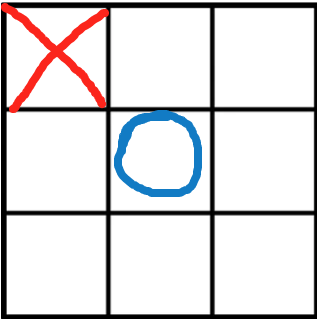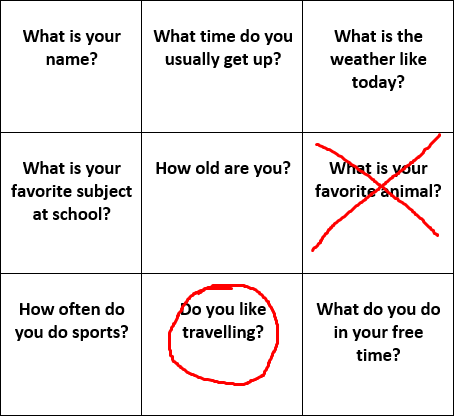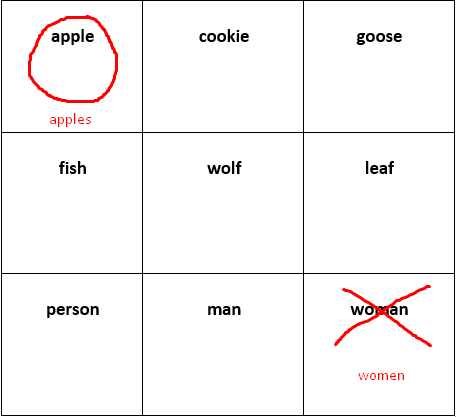Noughts and crosses or tic-tac-toe is a popular game that is commonly used in ESL lessons. Its simplicity and affordability allow integrating the activity almost in every lesson. It’s known that the leading activity for a student in primary school is a game so noughts and crosses game helps to vary lesson with young learners, make them more engaging and dynamic. In this article, we’ll describe how teachers can use noughts and crosses game in the primary lesson.
— Vocabulary or grammar revision/practice
Noughts and crosses are perfectly suitable for vocabulary freer practice or revision. It can be organized in individual lessons and group ones. The aim is to create a sentence or name the word and according to the certain topic (e.g., name a green vegetable, make up the sentence with “have to”) and put “cross” or “nought” in a table. The student can play in this way with the teacher or in a pair with another student. If the game is between the student and the teacher it’s better to give a student an opportunity to win (but not obviously). It will help to create a situation of success and to increase students’ motivation.

— Team games
Noughts and crosses can be a subsidiary activity. For example, it can involve a group of primary students in major games that presuppose teamwork like Jeopardy, memory games and so on. Noughts and crosses here can be used as a tool to keep track of the students’ progress and increase their motivation. For each correct answer, one representative of the group puts cross or nought on the table/whiteboard. The team that has a certain number of crosses/noughts in a row wins.
— Answering questions
Noughts and crosses can be a subsidiary activity for productive speaking. It can also be used during individual and group lessons. The aim is to answer questions and put “cross” or “nought” in a square. Surely, the focus here is not winning but practising speaking, but students should feel that it’s just an interesting and engaging game.

— Changing the word form
The activity can also be used to vary word formation exercises. Working in pairs/groups/with a teacher young learners should change the word form according to the topic and put “cross” or “nought”. As an additional activity, they can write a new word form near the previous one.

— Creating sentences
This activity will be productive for freer speaking. The student will get tables with certain words. The aim of the activity is to form sentences using given words. If students and strong it’s possible to complicate the task by adding extra conditions, e.g. “the sentence should contain at least 6 words”.
What should the teacher mind organizing “noughts and crosses game”?
— the educational aspect shouldn’t be obvious
Students should think they are just playing a game. So it’s better to avoid immediate error correction and other comments. If it is crucial to give feedback, it is better to do it when the activity is finished.
— the competitive spirit should not lead to quarrels
If the teacher is playing with the student, it is better to give him an opportunity to win. If two young learners are playing together think of rewards or small prizes for both of them. Such activities should give only positive emotions.
— level and age-appropriate tasks
Noughts and crosses are commonly used to revise grammar/vocabulary or for productive speaking activities. Choosing the material make sure that students are familiar with topics, nothing will complicate them.
— interaction patterns
Even the most interesting game may become boring if it is the same every time. So, always think about how can you vary the activity: additional tasks, active elements, teamwork, etc.






 Вероника Аветисян
Вероника Аветисян 
 Маргарита Аветисян
Маргарита Аветисян 


